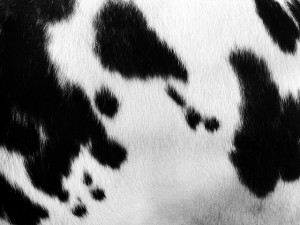We are going to let you in on a little secret; cows make great brand ambassadors! Don’t believe us? Just ask one of the several dozens of companies that use cows in their logos or as mascots. Cows appear on the packaging and in the logos and ads for companies like Amy’s Ice Cream, Skinny Cow Ice Cream, Laughing Cow Cheese, Horizon Organic Milk Gateway, Bluebell Ice Cream, Elmer’s glue, Yoomoo Frozen Yogurt, Eagle Brand Milk, Happy Cow Cheese and the Holy Cow Canoe Company.
Two of the most famous cow brand ambassadors are the Chick-fil-A Cows, of course, and Elsie the cow mascot for Borden dairy products. Elsie the cow first appeared in cartoon form in 1936, while the first living Elsie cow appeared at the 1939 New York World’s Fair. The Chick-fil-A “Eat mor chikin” cows first appeared in 1995 and they are still active brand ambassadors almost 20 years later.
Cows and Dairy Products
Using cows as brand ambassadors for dairy products is a no-brainer. It might be more of a challenge to find a milk, cheese or ice cream logo that does not utilize a cow image for branding purposes. Milk, cheese and ice cream- all of these dairy products come from cows, it simply makes the most sense to use an image of a cow to convey the “healthy and natural” origins of the product within. By using a cow on the packaging for dairy products, companies are hoping to communicate the wholesomeness of their brand.
Cows are Trustworthy and Nonthreatening
Children are introduced to cows at an early age. Cows are featured in countless songs like “Old MacDonald” and nursery rhymes like “The Cow jumped over the moon”. Toy farm sets and Noah’s arks also help familiarize children with cows, while toys like the See ‘N Say educate young-ins about the sounds cows make. The constant presence and familiarity of cows help these brand ambassadors to be seen as trustworthy and non-threatening. When people associate a certain product or brand with cows, this trustworthiness is transferred to that brand. Of course you should eat more chicken, the adorable cows said you should! Clever brands employ cows as brand ambassadors because their presence is both familiar and pleasant.
The Animal Angle
Animals are cute and often connote positive feelings. Any brand that employs an animal mascot is already one step ahead of the game. Uncommon animals like the Giant Coconut Crab or rare animals like the Amazonian Royal Flycatcher are not easily recognizable and do not carry the same clout that a zoo animal like a zebra, farm animal like a pig or household animal like a dog might. Nevertheless, an animal helps to give people something familiar to associate your brand with. This makes your brand more memorable.
The Graphic Elements of a Cow
The striking black and white spots of a cow are universally recognized. Who wouldn’t want to use the graphic elements of a cow in their logo? The black and white spots will also easily match other colors and fonts marketers may want to use when creating a brand.
Why Square Cow Moovers?
A cow mascot for a moving company is something we couldn’t resist. Cows moo, we moove and you can’t miss our black and white spotted trucks!
Image: flickr.com/photos/shaireproductions/3766840922
Original Source: https://squarecowmovers.com/cows-as-brand-ambassadors/

